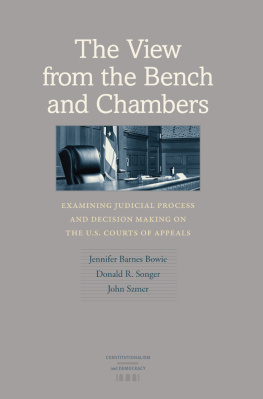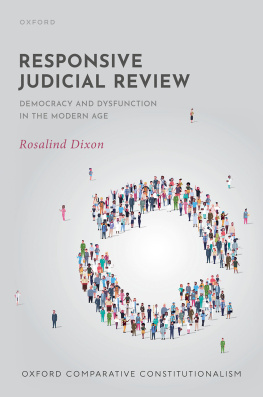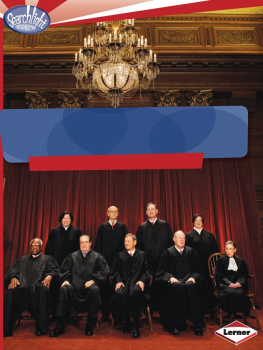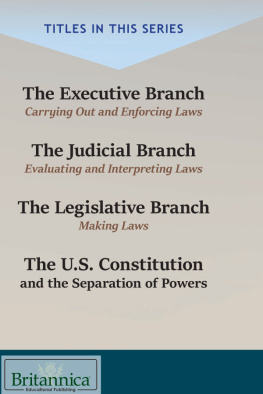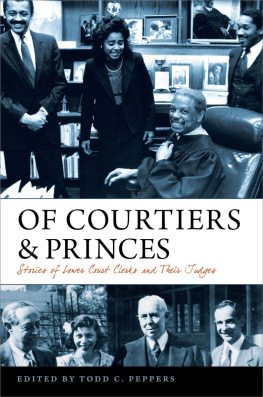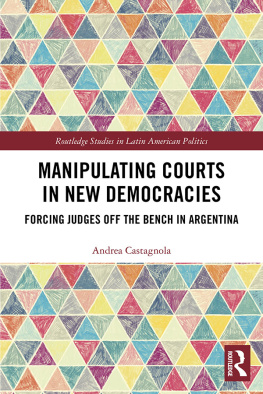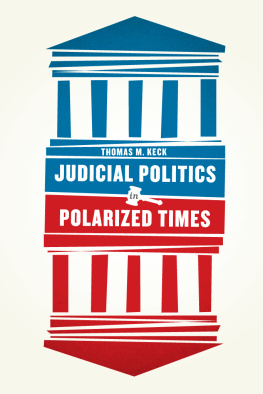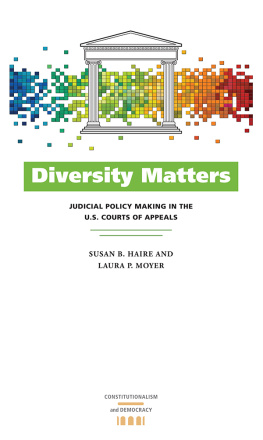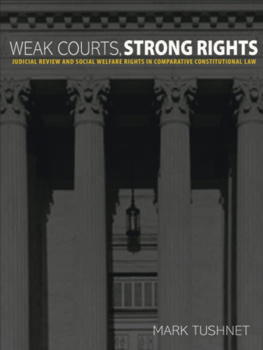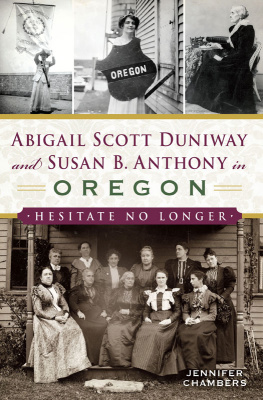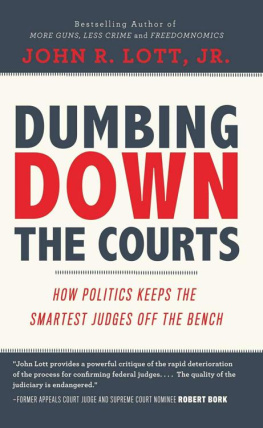The View from the Bench and Chambers
Constitutionalism and Democracy
GREGG IVERS AND
KEVIN T. MCGUIRE,
EDITORS
The View from the Bench and Chambers
EXAMINING JUDICIAL PROCESS AND DECISION MAKING ON THE U.S. COURTS OF APPEALS
Jennifer Barnes Bowie,
Donald R. Songer,
and John Szmer
UNIVERSITY OF VIRGINIA PRESS CHARLOTTESVILLE AND LONDON
University of Virginia Press
2014 by the Rector and Visitors of the University of Virginia
All rights reserved
Printed in the United States of America on acid-free paper
First published 2014
9 8 7 6 5 4 3 2 1
LIBRARY OF CONGRESS CATALOGING-IN-PUBLICATION DATA
Bowie, Jennifer Barnes, author.
The view from the bench and chambers : examining judicial process and decision making on the U.S. Courts of Appeals / Jennifer Barnes Bowie, Donald R. Songer, and John Szmer.
pages cm. (Constitutionalism and democracy)
Includes bibliographical references and index.
ISBN 978-0-8139-3599-7 (cloth : alk. paper) ISBN 978-0-8139-3600-0 (e-book)
1. Appellate courtsUnited States. 2. Judicial processUnited States. I. Songer, Donald R., author. II. Szmer, John J., 1970 author. III. Title.
KF8750.B69 2014
347.73'24dc23
2014007111
For Gavin Bowie and my family.JBB
For Michael. Now you have a hammer.DSS
For Martha Kropf and Gwen and Zach Szmer.JSS
CONTENTS
ACKNOWLEDGEMENTS
We began this book in the hope of shedding new light on the U.S. courts of appeals. To do so required help of both a personal and a professional sort from many individuals. First and foremost, we owe a large debt of gratitude to all the judges who gave their time to speak candidly with us about the nature of decision making by courts of appeals judges; without their willingness and openness this book would not been possible.
University of Virginia Press editors Kevin McGuire, Gregg Ivers, and Dick Holway lent enthusiastic support to the project, each providing enormous assistance at various stages of the publication process. In addition, we are grateful for the recommendations of the anonymous reviewers of the manuscript, whose thoughtful suggestions improved the book.
Some of the ideas for the manuscript stemmed from earlier work. , for example, includes a version of Assessing the Applicability of Strategic Theory to Explain Decision Making on the Courts of Appeals (Bowie and Songer 2009), which was published in Political Research Quarterly, and part of a conference paper, Decision Making on the Courts of Appeals: Can Judges Predict the Likelihood of En Banc Review?, by Bowie, which was presented at the 2009 Annual Meeting of the Midwest Political Science Association.
Several individuals read different parts of the manuscript. For such critical readings we thank Susan Haire, Kirk Randazzo, Wendy Martinek, and Christopher Zorn. We also thank Michael Giles, Thomas Walker, and Christopher Zorn for their Fifth Circuit en banc data set, which they made available to us to use in the analysis in .
We would like to specially recognize Rob Christensen, who almost achieves the status of a fourth author. Rob played a major role in putting together much of the quantitative data we analyzed. He also worked on several prior conference papers (particularly those analyzing dissent and opinion assignment) and a published article (in the International Review of Law and Economics) that heavily influenced several empirical analyses. While Rob may not have written the book, his ideas and understanding permeate the work.
Jennifer Barnes Bowie is immensely grateful to her husband, Gavin Bowie, for his consistent support over the course of her career, and particularly during the writing of the manuscript. She also thanks her family, who have supported her in many ways, in particular Maureen and Paul Williams and The Honorable Peter W. and Sarah Bowie. Additionally she would like to thank Wendy Martinek, Christopher Zorn, and Bob Dudley, for their unwavering guidance and encouragement, and the University of Richmond, which provided financial research support for this project. She is especially grateful to the judges who took time to speak with her. Finally, thanks are owed to S. J. Hightower, Emily Vanover, Liz Dedman, and Sara Krauss for their invaluable research assistance.
Donald R. Songer thanks the many judges of the U.S. Courts of Appeals who took time from their busy schedules to talk to him, and especially Judge Robert Katzman, who facilitated an invitation to Songer to attend the annual retreat of the Second Circuit Court of Appeals and the gracious hospitality accorded him there by the judges on the Second Circuit. Songer is grateful to his family for their patience and support during his extensive travels to visit judges, and especially his son, Michael, and Michaels wife, Erica, who shared their perspective as clerks to judges on the courts of appeals.
John Szmer is thankful for the continuing support of his family, especially his childrenconstant sources of amusementand his wife and colleague, Martha Kropf. Without her encouragement and support this project could not have been completed. He also thanks Mason DeCammillis, a former student, for research assistance; Reese Manceaux, the University of North Carolina at Charlotte Data Services Librarian, for extremely helpful assistance in merging the yearly Federal Judicial Center databases into one data set; and the University of North Carolina at Charlotte, for granting the research leave that helped make this project possible.
The View from the Bench and Chambers
INTRODUCTION
The Courts of Appeals in the U.S. Legal System
For much of their history, the U.S. courts of appeals have toiled in obscurity, well out of the limelight of political controversy. But as the number of appeals has increased dramatically in recent decades, while the number of cases heard by the Supreme Court has remained the same, the courts of appeals have increasingly become in practice the courts of last resort for the vast majority of litigants. This enhanced status has been recognized by important political actors, and as a result, appointments to the courts of appeals have become increasingly controversial since the 1990s (Binder and Maltzman 2009). This combination of increasing political salience accompanied by increasing political controversy finally led scholars, particularly in the past two decades, to undertake serious empirical studies of the role of the courts of appeals in the U.S. legal and political system. In particular, a number of studies have sought to test theories developed to explain the politics of the Supreme Court in the context of the courts of appeals (see Cross 2007; Hettinger, Lindquist, and Martinek 2006; Klein 2002; Sunstein et al. 2006). As a result, scholars now debate the applicability of both attitudinal and strategic models to describe decision making on the courts of appeals. With that said, the courts of appeals still remain understudied compared to the more extensive body of scholarship on the Supreme Court, but both the volume and quality of empirical work on the intermediate courts have risen sharply in the past two decades.
Despite the increased scholarly attention, one relevant line of inquiry remains largely ignored: the perspective of the judges themselves. This book seeks to fill that lacuna in the literature with a comprehensive examination of processes and politics on the courts of appeals as seen from the dual perspectives of the judges and their clerks, on the one hand, and empirical research grounded in statistical analysis on the other.

